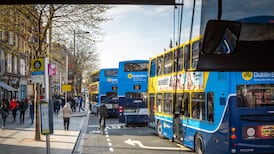Thirty-five years ago, after 40 years as separate entities, the fall of the Berlin Wall in November 1989 was followed by the formal reunification of the two Germanies in October 1990. This allowed very little time to plan the transition.
The decision to set a 1:1 exchange rate between the Deutschmark and the Ostmark drove up eastern prices and wages. With a single currency and a unified distribution system for consumer goods, the eastern price level, which had been 30 per cent lower in 1990, rapidly rose to western levels. Eastern wages had to follow suit, making many businesses in the former GDR uneconomic.
Because unification happened so rapidly and unexpectedly, the process was not very well managed.
The effects of the loss of competitiveness, as wages adjusted, were compounded by the very rapid sale of previously government-owned enterprises in the East before they could be reformed and put on a better financial footing. The result was wholesale closures in the East.
READ MORE
If more time had been given to reforming some of these large enterprises, they might have survived in the new unified German economy.
Looking at an electoral map of Germany today, the previous border between East and West is reflected in very different voting patterns, with strong support in the east for the anti-immigrant AfD. Unification has not produced a unity of minds, and the former East and West Germany continue to have very different political preferences.
Unification provided no guarantee that output and productivity levels would eventually converge – that would have needed appropriate policies. The economic differences remain pretty stark: education and skills levels in the East lag those in the West.
While there has been some convergence in output per head between the two parts of Germany since unification, East German productivity today is still only a little over 70 per cent of that in the West, with minimal progress over the last decade. To maintain living standards, there has been a continual transfer of funds from the West to the East, amounting to about 15 per cent of eastern income today.
By contrast, Lithuania, which in 1990 had much lower productivity than East Germany, having invested in education, has today exceeded its former comrades and is converging on the EU average.
Those who advocate for an early referendum on Irish unification can learn lessons from the German experience.

Are plug-in hybrids just as polluting as petrol cars?
The Republic’s general price level is 15 per cent higher than that of the United Kingdom, while food prices are 34 per cent higher. Reunification and adoption of the euro would mean rapid price convergence North and South, with northern prices rising rapidly.
In northern counties, we would see the substitution of euro-supply chains for the current, dominant UK-wide ones. Brexit already marked such a relocation of supply from British to Irish warehouses, driving up prices.
A rapid upward adjustment in prices in the North would necessitate a similar rapid adjustment of wages. Together with increased costs for the big inputs coming from Britain, this would make Northern Ireland export businesses much less competitive, leading to closures.
After significant initial disruption, eventually these adjustment costs would wear off and the benefits of full EU membership would kick in.
Like the former East Germany, on average, northern workers have lower education and skills than their southern counterparts. To mitigate the immediate economic shocks that unification would bring to the northern economy, there is a need to reform the northern education system well in advance of any changeover. If the North is to converge to the Republic’s standard of living, it would need to have equivalent levels of human capital and productivity to attract new businesses to compensate for those likely to disappear as prices and wages rise.
Any move to unification in the near future could prove very serious for an unprepared Northern Ireland economy.
No one has begun to plan how to deal with the disruption and costs of transitioning from UK to EU membership. There are few signs of reforming and upgrading the North’s education system to safeguard its economic future.
The length of time apart would also make reunification much trickier than for Germany. Ulster has long had different political traditions and allegiances compared to the rest of the island. We have had two separate states for more than a century and, while not prevented from intermingling by a wall, they have evolved culturally and economically in different ways.
Few advocates of Irish unity have even begun to consider how to practically reconcile the island’s different traditions, nor how to develop inclusive political institutions that avoid the policy sclerosis that besets Stormont.
















